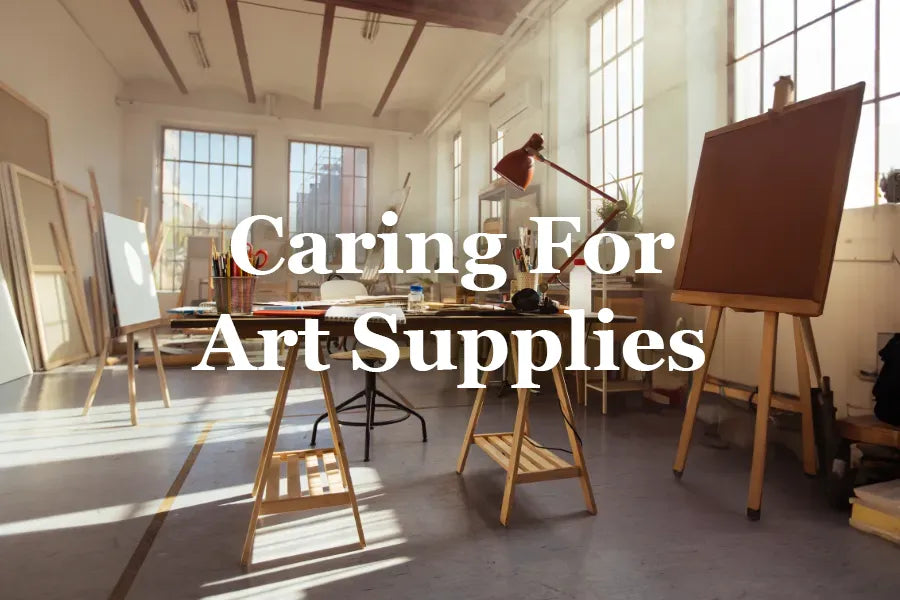This blog is supported through the affiliate links below
Master the Art of Perspective in Landscape Painting: A Simple Guide
When speaking of landscape painting, perspective is more than just a technique, it's a language that lets you communicate depth and distance. Understanding it can progress your art to a new level. Let’s look at why and how.

Note: This blog contains affiliate links and purchasing through them supports our site at no extra cost to you.
The Power of Perspective
Capturing a great landscape goes beyond simply illustrating what's visible. It's about conveying depth, emotion, and a sense of place. Perspective is not merely a tool; it's the magic that transforms a scene into an immersive experience. Through perspective, a canvas becomes a window, inviting viewers to step in, explore, and feel the emotions painted into every corner.Depth Illusion
Crafting depth in a painting is the bridge between the two-dimensional canvas and our three-dimensional reality. Properly executed perspective breathes life into landscapes, giving them the appearance of depth and space. It prevents flatness and allows for an almost tangible experience, making hills seem climbable and distances look traversable. This helps bridge the gap between viewer and vista.
Emotional Depth
While perspective lends spatial depth to a painting, its real power lies in its ability to evoke emotion. The way objects are arranged, receding into the background or looming in the foreground, can guide the viewer's emotions. Perhaps it creates a sense of longing as a distant mountain range seems just out of reach, or a feeling of coziness as a nearby cottage appears invitingly close. By manipulating perspective, an artist doesn't just capture a scene; they invite the viewer to feel and connect with it.
 Landscape painting by Chuck Black
Landscape painting by Chuck Black
Key Concepts in Perspective
Every landscape painting is a delicate dance of lines, angles, and viewpoints. To truly appreciate or create a work of art, understanding the underlying principles of perspective is vital. These concepts not only provide a structural foundation but also breathe life and depth into a scene, transforming it from a flat canvas to a window into another world.Horizon Line
At the very heart of perspective lies the horizon line, a silent anchor that grounds everything else in the painting. While it's an imaginary line, its influence is undeniably real. It signifies the viewer's eye level, serving as a reference for height and depth. Whether you’re painting a vast ocean or rolling countryside, the placement of the horizon line dictates the mood, offering either a sense of expansiveness or intimacy, depending on its position.
Vanishing Points
Imagine standing between two parallel train tracks, looking into the distance. Eventually, those tracks seem to meet, even though in reality, they never do. That's the magic of vanishing points. They dictate where parallel lines appear to converge, providing an essential framework for the depth and directionality in a painting. Whether you're drawing a winding road or a series of buildings, mastering the placement of vanishing points can transform a scene into a three-dimensional journey for the eyes.
 "The School of Athens" Painting by Raphael, 1511 {{PD-US}}
"The School of Athens" Painting by Raphael, 1511 {{PD-US}}
Step-by-Step Guide to Perspective
- Establish the Horizon: Decide where the horizon line should be based on the viewpoint you want to depict.
- Set Vanishing Points: If you're working with one-point perspective, one vanishing point will suffice. For more complex scenes, you might need two or three.
- Draw Guide Lines: These lines will help you place objects and features in your landscape correctly.
- Check Proportions: As objects move closer to the horizon, they should appear smaller. Make sure to adjust the size of your objects accordingly.
Tips for Perspective
- Always Observe: Spend time in different environments and observe how perspective changes with your viewpoint.
- Repeat and Adjust: Don't be afraid to adjust your lines as you go. Even experienced artists make tweaks to improve their perspective.
 "The Setting Sun" Painting by Chuck Black
"The Setting Sun" Painting by Chuck Black
Final Thoughts
Mastering perspective is certainly a worthwhile investment for any landscape painter. It brings depth, realism, and emotional gravity to your work, enriching the viewer's experience and your own artistic skills.
Grow Your Painting Skills and Resources
Instant access to 1000s of royalty-free reference photos of landscapes and wildlife as well as step by step oil painting videos. Checkout My Memberships for more info.

I'm Chuck Black, landscape and wildlife artist based in Southwest Montana.




